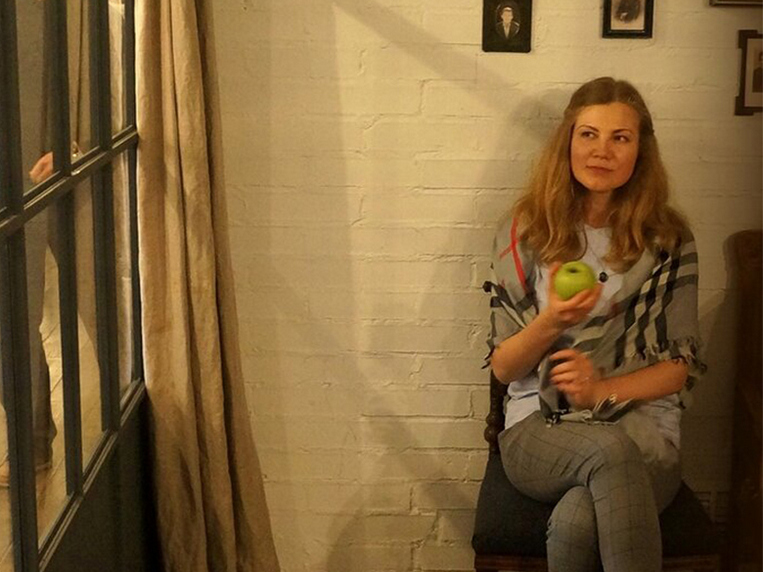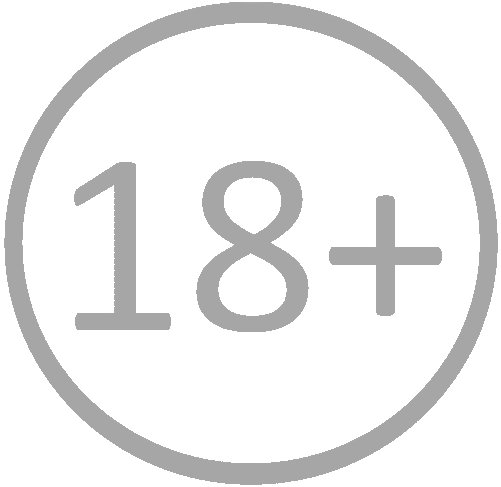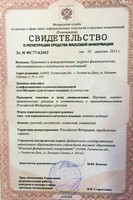
ГЕНЕАЛОГИЯ ЖЕСТА: ОТ КИРЫ МУРАТОВОЙ К РЕНАТЕ ЛИТВИНОВОЙ
Аннотация
Многолетнее творческое сотрудничество Киры Муратовой и Ренаты Литвиновой началось с фильма «Увлеченья» (1994), в котором Литвинова выступила в качестве актрисы и сценаристки. С той поры Литвинова стала одним из самых ярких олицетворений орнаментального киностиля Муратовой, в котором особый режим видимости создается благодаря эксцентричной телесности актеров-непрофессионалов, или, другими словами, жесту как категории телесного и речевого перформанса. В данной статье внимание сфокусировано на первосцене рождения жестовой генеалогии, связывающей двух режиссерок: жест патологоанатома из монолога медсестры Лили, написанного и прочитанного Литвиновой в муратовском фильме в свойственной ей эксцентричной манере, разворачивается в полнометражное киноповествование «Последней сказки Риты» (2012) с фантастическим сюжетом и зрелищными визуальными эффектами, определяющими уже индивидуальный режиссерский стиль Литвиновой. Статья, с одной стороны, прослеживает сконцентрированную в одном простом жесте многоуровневую и двунаправленную взаимосвязь фильмов Муратовой и Литвиновой, а с другой, рассуждает о возможных путях теоретического осмысления категории жеста в тексте и кино. Так, жест предстает как пограничная фигура речи и/ или тела, направленная на отсутствующий предмет, причем хватательная функция руки понимается в том числе и буквально. Жест в тексте предстает как металепсис, который, переведенный в кинопространство, подчеркивает хаптический характер образа. Отсутствующий объект, вокруг которого возникает жестикуляция, приводит к рассуждению о проблематике знакового статуса жеста и о процессе затрудненной сигнификации при его интерпретации. Поскольку жест лишь указывает и сигнализирует, но не обозначает, можно говорить о семиотической функции монстрации. Жест – это не что иное как монстр в прямом смысле слова, т. е. тот, кто указывает и тем самым внушает беспокойство. Жестикулирование вынуждает примерить на себя образ монстра, т. е. обозначать, делая из себя зрелище. Оба фильма и фигура Литвиновой рассматриваются через призму монструозности как жеста, так и языка. Именно дизъюнкция между показом и говорением обнажает жест как сферу чистой медиальности.
Ключевые слова: жест, вещь, нарратив, металепсис, медиа, поверхность, монстрация, монстр, язык, медиальность.
DOI 10.18522/2415-8852-2021-3-22-48Полный текст:
PDFЛитература
Abdullaeva, Z. (Ed.) (2008). Kira Muratova: iskusstvo kino [Kira Muratova: the art of cinema]. Moscow: Novoe literaturnoe obozrenie.
Agamben, G. (1999). Kommerell, or On gesture. In G. Agamben, Potentialities. Collected essays in philosophy (D. Heller-Roazen, Trans.). Stanford: Stanford University Press, 77–85.
Agamben, G. (2000). Means without end: notes on politics (V. Binetti & C. Casarino, Trans.). Minneapolis, London: University of Minnesota Press.
Agamben, G. (2018). Karman. A brief treatise on action, guilt, and gesture (A. Kotsko, Trans.). Stanford, California: Stanford University Press.
Archangel’skiy, A. (1997). Tema i rema [Theme and rhema]. Iskusstvo Kino [The art of cinema], 6, 19–26.
Aronson, O. (1997). Mezhdu priyomom i attraktsionom [Between device and attraction]. Iskusstvo Kino [The art of cinema], 9, 102–107.
Aronson, O. (2003). Metakino [Metacinema]. Moscow: Ad Marginem.
Assmann, A. (1988). Die Sprache der Dinge. Der lange Blick und die wilde Semiose [The language of things. The long look and the wild semiosis]. In H. U. Gumbrecht, & K.L. Pfeiffer (Eds.), Materialität der Kommunikation [Materiality of communication]. Frankfurt am Main: Suhrkamp, 237–251.
Belyy, A. (1969). Masterstvo Gogolia. Die Kunst Gogol’s [Masterstvo Gogolia. The art of Gogol]. München: Wilhelm Fink Verlag. Benjamin, W. (1998). Understanding Brecht (A. Bostock, Trans.). London, New York: Verso. Bloom, H. (1975). A map of misreading. New York: Oxford University Press.
Bullot, É. (2012). Thoughts on photogénie plastique. In S. Keller, & J. N. Paul (Eds.), Jean Epstein. Critical essays and new translations. Amsterdam: Amsterdam University Press, 245– 262.
Deleuze, G. (2006). Foucault (S. Hand, Trans.). Minneapolis, London: University of Minnesota Press.
Deleuze, G. (1990). Logique du sens [The logic of sense]. (M. Lester, & Ch. Stivale, Trans.). London: The Athlone Press.
Derrida, J. (1987). Geschlecht II: Heidegger’s Hand [Gender II: Heidegger’s Hand]. In J. Sallis (Ed.), Deconstruction and philosophy. The texts of Jacques Derrida. (J. P. Leavey Jr., Trans.). Chicago, London: The University of Chicago Press, 161–196.
Derrida, J. (1978). Le théâtre de la cruauté et la clôture de la représentation [The theater of cruelty and the closure of representation]. In J. Derrida, L’écriture et la différence [Writing and Difference]. (A. Bass, Trans.). London. New York: Routledge Classics, 292–316.
Desyaterik, D. (2005). Kira Muratova: To, chto my nazyvaem ‘kich’ ili ‘bezvkusitsa’, mne ne chuzhdo [What we call ‘kitsch’, or ‘bad taste’, isn’t alien to me]. Iskusstvo Kino [The art of cinema], 1. Retrieved from: https://old.kinoart. ru/archive/2005/01/n1-article2 (date of access: 03.09.2021).
Epstein, J. (2012). On certain characteristics of photogénie; “the photogenic element”. In S. Keller, & J. N. Paul (Eds.), Jean Epstein. Critical essays and new translations. Amsterdam: Amsterdam University Press, 299– 302.
Eykhenbaum, B. (1919). Kak sdelana “Shinel’” Gogolya [How Gogol’s “Overcoat” was made]. In Poetika: Sborniki po teorii poeticheskogo yazyka [Poetics: Collections in Poetic Language Theory]. Petrograd: 18-ya gosudarstvennaya tipografiya, 151–165.
Faure, É. (1953). De la cinéplastique [On cineplasticity]. In Fonction du cinéma. De la cinéplastique à son destin social (1921–1937) [The function of cinema. From cineplasticity to its social destiny (1921–1937)]. Paris: Éditions d’Histoire et d’Art, Librairie Plon, 21–45.
Fischer-Lichte, E. (2004). Ästhetik des performativen [Aesthetics of the performative]. Frankfurt am Main: Suhrkamp.
Foucault, M. (2004). Abnormal: lectures at the Collège de France, 1974–1975. (G. Burchell, Trans.). London: Picador.
Foucault, M. (2018). Les mots et les choses: une archéologie des sciences humaines [The order of things. An archaeology of the human sciences]. London, New York: Routledge.
Genette, G. (2004). Métalepse. De la figure à la fiction [Metalepse. From figure to fiction]. Paris: Édition du Seuil.
Görling, R., & Skrandies, T., & Trinkaus, S. (Eds.) (2009). Geste: Bewegungen zwischen Film und Tanz [Gesture: movements between film and dance]. Bielefeld: transcript.
Graham, R. (1998). The meaning of death: Kira Muratova’s cinema of the absurd. In B. Beumers (Ed.), Russia on reels: The Russian idea in post-Soviet cinema. London: Bloomsbury Academic, 144–160.
Groys, B. (2000). Unter Verdacht. Eine Phänomenologie der Medien [Under suspicion. A phenomenology of media]. München: Carl Hanser Verlag.
Hamidy, E. (2020). Historische Zeit im Narrativ. Maksim Gor’kijs “Das Leben des Klim Samgin” und Robert Musils “Der Mann ohne Eigenschaften” [Historical time in narrative. Maksim Gorky’s “The Life of Klim Samgin” and Robert Musil’s “The Man Without Qualities”]. Bielefeld: transcript Verlag.
Jakobson, R. (1971). Two aspects of language and two types of aphasic disturbances. In R. Jakobson, Selected Writings II. Word and Language. The Hague, Paris: Mouton, 230–259.
Kundera, M. (1992). Nesmrtelnost [Immortality] (P. Kusi, Trans.). London: Faber and Faber.
Kundera, M. (1993). Nesmrtelnost [Immortality]. Brno: Atlantis.
Lacan, J. (1992). The seminar of Jacques Lacan. Book VII: the ethics of psychoanalysis, 1959–1960. (D. Porter, Trans.). New York, London: W.W. Norton & Company.
Lacan, J. (1998). The seminar of Jacques Lacan. Book XI: The four fundamental concepts of psychoanalysis. (A. Sheridan, Trans.). New York, London: W.W. Norton & Company.
Litvinova, R. (2012, October 16). Interv’yu: Renata Litvinova o “Posledney skazke Rity” [Interview: Renata Litvinova on “Rita’s Last Tale”]. Moskva24. Retrieved from: https://www.m24.ru/ videos/intervyu/16102012/4056 (date of access: 03.09.2021).
Litvinova, R. (2007). Obladat’ i prinadlezhat’ [To possess and to belong]. St. Petersburg: Amfora.
Marks, L.U. (2000). The skin of the film. Intercultural cinema, embodiment, and the senses. Durham, London: Duke University Press.
Moskvina, T. (1998). Femina sapiens. Iskusstvo Kino [The art of cinema], 4. Retrieved from: https://old.kinoart.ru/archive/1998/04/n4-article11 (date of access: 03.09.2021).
Matzner, S. (2016). Rethinking metonymy. Literary theory and poetic practice from Pindar to Jakobson. Oxford: Oxford University Press.
Mukhortova, O. (2017). Renata Litvinova’s star persona. Studies in Russian and Soviet Cinema, 11 (1), 20–37.
Mukhortova, O. (2019). Renata’s last cigarette: Chain smoking in Litvinova’s “Rita’s Last FairyTale”. KinoKultura, 64. Retrieved from: http:// www.kinokultura.com/2019/64-mukhortova. shtml (date of access: 03.09.2021).
Muratova, K. (2004, November 5). “Mne khochetsia nravit’sia vsem” [I want to be liked by everyone]. MK.RU. Retrieved from: https://www.mk.ru/editions/daily/article/2004/11/05/101345-kira-muratova-mne-hochetsya-nravitsya-vsem.html (date of access: 03.09.2021).
Muratova, K., & Zuev, V. (2014). Watch your dreams attentively, or The touch. (B. Beumers, Trans.). Studies in Russian and Soviet Cinema, 8(1), 51–96.
Nabokov, V. (1989). Pnin. New York: Vintage International.
Nancy, J.-L. (2008). Corpus (R.A. Rand, Trans.). New York: Fordham University Press.
Ortega y Gasset, J. (1947). Deshumanización del arte [Dehumanisation of art]. Obras completas, 3, Madrid: Revista de Occidente, 353–386.
Ortega y Gasset, J. (2019). Deshumanización del arte [Dehumanisation of art]. In J. Ortega y Gasset, The dehumanization of art and other essays on art, culture, and literature. (H. Weyl, Trans.). Princeton and Oxford: Princeton University Press, 3–54.
Pisters, P. (2015, November 8). Deleuze’s metallurgic machines. Los Angeles Review of Books. Retrieved from: https://lareviewofbooks.org/ article/deleuzes-metallurgic-machines/ (date of access: 03.09.2021).
Quintilian, M. F. (1959). Institutio oratoria in four volumes (Vol. 8) (H.E. Butler, Trans.). Cambridge, MA: Harvard University Press.
Ryan, M.-L. (2004). Metaleptic machines. Semiotica, 150(1), 439–469.
Schöning, M. (1998). Gesten der Interpretation, Gadamer und Derrida [Gestures of interpretation, Gadamer and Derrida]. Diss.sense. Zeitschrift für Literatur und Philosophie. Retrieved from: http://www.dissense.de/ge/schoening.html (date of access: 03.09.2021).
Schulzki, I., & Eshelman, R. (2012). Contingency, anthropology and space in Muratova’s later films. In B. Lange, N. Weller, & G. Witte (Eds.). Die nicht mehr neuen Menschen. Russische Filme und Romane der Jahrtausendwende. Wiener Slawistischer Almanach, Sonderband 79 [No more new people. Russian films and novels of the turn of the millennium. Viennese Slavic Almanac, Special volume 79]. München, Berlin, Wien: Verlag Otto Sagner, 293–312.
Shklovskiy, V. (1983). O pozakh i zhestakh [On postures and gestures]. In Izbrannoe v 2 tomakh. Tom 1. Povesti o proze. Razmyshleniya i razbory [Selected works in two volumes. Volume 1. Reflections and analyses]. Moscow: Khudozhestvennaya literatura, 134–139.
Shklovskiy, V. (1921). “Tristram Shendi” Sterna i teoriya romana [Stern’s “Tristram Shandy” and the theory of novel]. Petrograd: Opoyaz.
Starodubets, A. (2007, January 18). Kira Muratova: Ya mechtayu snyat’ nemoe kino. [Kira Muratova: I dream of making a silent film]. Trud, 079. Retrieved from: www.trud.ru/issue/ article.php?id=200701180070501 (date of access: 03.09.2021).
Strukov, V. (2016). The gesture of alterity: Renata Litvinova and the mediation of contemporary Russian sensibility. In Y. Hashamova, B. Holmgren, & M. Lipovetsky (Eds.). Transgressive women in modern Russian and East European cultures. From the bad to the blasphemous. New York: Routledge, 69–88.
Yampol’skiy, M. (2008). Muratova: Opyt kinoantropologii [Muratova: Essays on film anthropology]. St. Petersburg: Seans.
Ссылки
- На текущий момент ссылки отсутствуют.
(c) 2021 Irina Schulzki
ISSN 2415-8852
Свидетельство о регистрации СМИ Эл № ФС77-62683 от 10 августа 2015 г.
Регистрирующий орган: Федеральная служба по надзору в сфере связи, информационных технологий и массовых коммуникаций (Роскомнадзор)
УЧРЕДИТЕЛЬ: ФГАОУ ВО "Южный федеральный университет".
344006, г. Ростов-на-Дону, ул. Большая Садовая, 105/42,
тел. +7 (863) 218-40-00 E-mail: info@sfedu.ru
Адрес редакции: 344006, г. Ростов-на-Дону, пер. Университетский, 93, к. 8, тел. +7(903) 43-12-321
e-mail: oadzhumaylo@sfedu.ru

Произведения доступны по лицензии
Creative Commons «Attribution» («Атрибуция») 4.0 Всемирная.

